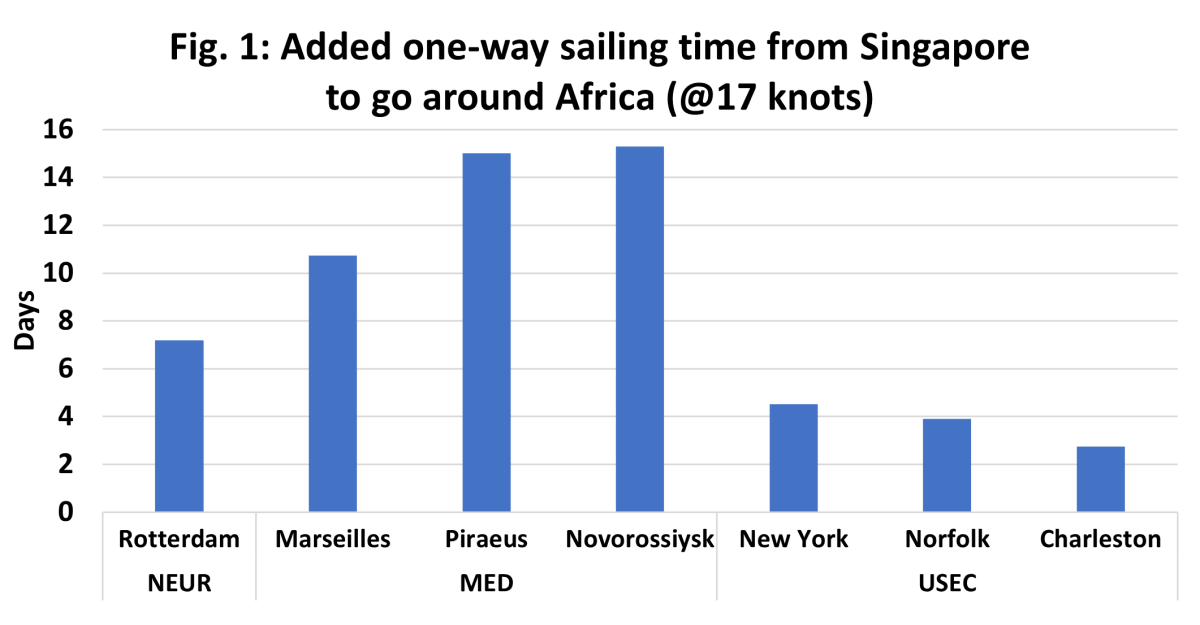
Suez blockage: 6% global capacity reduction
As the Suez Canal continues to remain blocked due to the grounding of Ever Given, it has the potential to cause severe capacity issues. In issue 507 of the Sunday Spotlight, published two days early, we analyse the impact an extended blockage could have on global capacity.
As a starting point, we looked at the added sailing distances and transit times in a one-way direction if the carriers re-route their vessels from Asia south of Africa, for destinations to North Europe, Mediterranean, and to US East Coast. Assuming vessels sailing at 17 knots, one week would be added from Singapore to Rotterdam, 10 days to West Mediterranean, and a little over two weeks to East Mediterranean. On Asia to US East Coast (USEC), roughly 2.5-4.5 days will be added to the head-haul sailing times.

With this, we can calculate the impact on global capacity. Presently, the global fleet has a nominal capacity of 24.4 million TEU. With a rough approximation of 80% time spent at sea, the global fleet has a “production capacity” of 19.6 million TEU slots per day, or 19.6 million TEU*Days. The longer sailing times would necessitate an extra 14.4 days round-trip to North Europe, and 26.8 days to Mediterranean. This adds a capacity requirement of 1 Million TEU*Days to move the longer distances. Adding the Asia-US East Coast cargo to that, we end up with another 108,000 TEU*Days.
Hence, all in all, in order to re-route the cargo around Africa – or through Panama in some cases for the Asia-US East Coast – this will absorb an amount of carrying capacity equal to 6% of the globally available capacity. Converting this into a nominal fleet equivalent, then 6% of the global fleet is equal to 1.48 Million TEU of capacity – the same as 74 ultra-large 20,000 TEU container vessels.
It is evident that such an amount of capacity absorption will have a global impact and lead to severe capacity shortages. It will impact all trade lanes, as carriers will seek to cascade vessels to locations where the find they have the greatest need. In the short term it is not possible to build more vessels to solve the problem – the only viable option would be to speed up the vessels. This can partially alleviate the problem, but far from solve it. In this case, increasing speed from 17 to 20 knots would reduce the impact on the global fleet from 6% to 5.2%. Going full throttle at 22 knots would still only reduce the impact to 4.8%.
--- 000 --- END OF PRESS RELEASE --- 000 ---
All quotes can be attributed to: Alan Murphy, CEO, Sea-Intelligence.
For more information, please contact: This email address is being protected from spambots. You need JavaScript enabled to view it., This email address is being protected from spambots. You need JavaScript enabled to view it.
| |
|
|
||
| Download press release in PDF | Download press release in Word | Download Excel file with the above chart(s) |